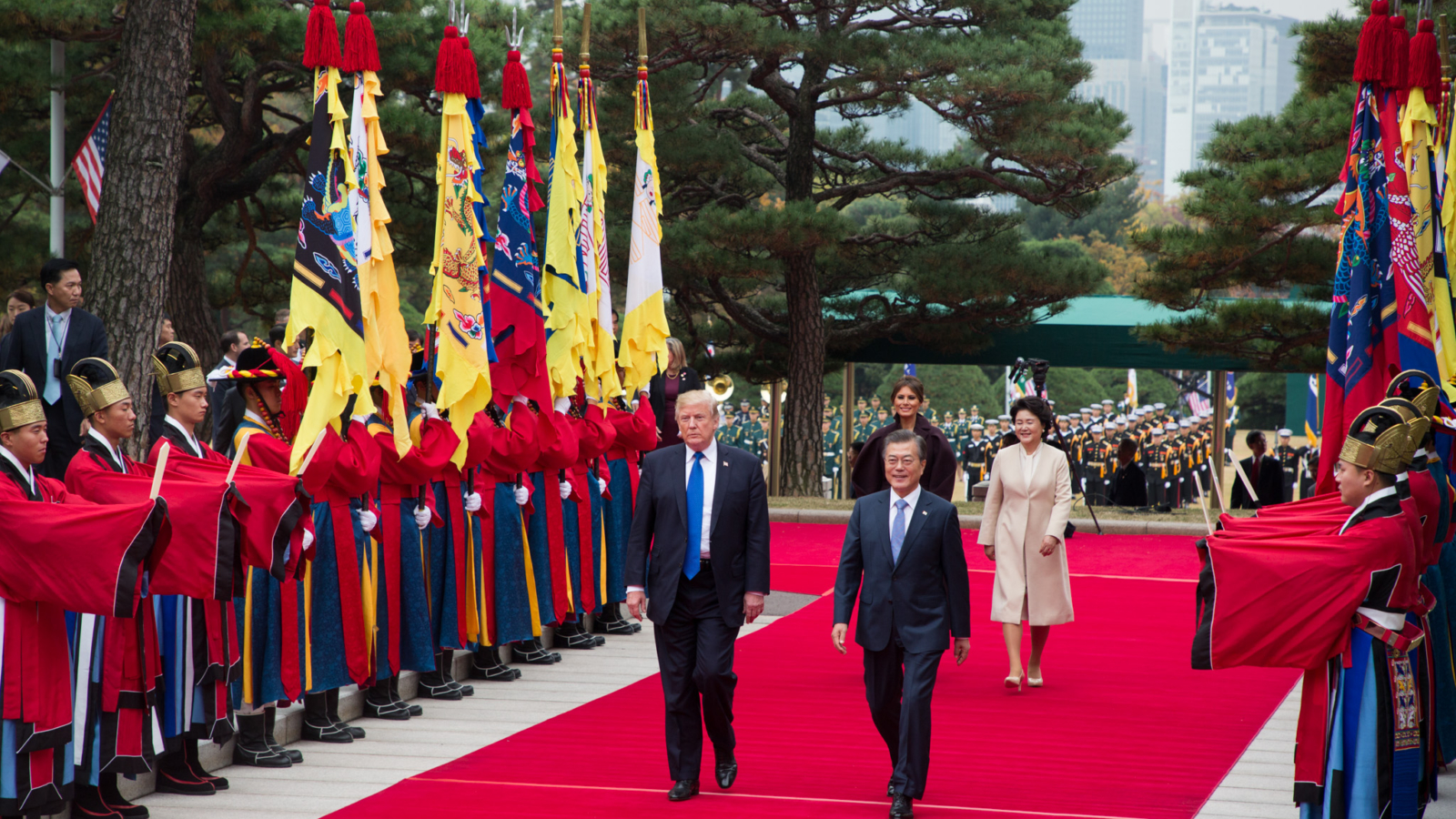By James H. Nolt
The leaders of the two Korean states meet this week for only the third time since Korea was divided in the aftermath of World War II. U.S. President Donald Trump has also stated that he intends to meet North Korean leader Kim Jong Un in the coming weeks, although the time and place are not yet agreed. This would be the first-ever meeting between a sitting U.S. president and the leader of North Korea. Much is riding on the success of these two summits. If they fail, the possibility of a disastrous war still hangs over the peninsula.
Kim’s meeting with South Korean President Moon Jae-in is being closely watched in Washington to clarify the North’s view on a potential nuclear weapons deal. The Friday before the summit, Kim announced that North Korea would suspend long-range missile tests and close its nuclear testing facility. This will be the first bilateral meeting between Korean leaders to discuss steps toward a nuclear-free Korean peninsula—North Korea has previously held nuclear talks with the U.S. present, but not with South Korea alone, which does not itself possess nuclear weapons. It is likely that Kim is eager to send a message to Trump that he is sincere about denuclearization.
On Tuesday Trump sounded upbeat when he answered reporters’ questions during a meeting with French President Emmanuel Macron. He said, “We have been told directly that [North Korea] would like to have a meeting as soon as possible. We think that’s a great thing for the world … Kim Jong Un, he really has been very open and I think very honorable from everything we’re seeing.”
Trump reportedly will demand that North Korea take rapid, verifiable steps to dismantle its nuclear arsenal before the U.S. will agree to relax its restrictive economic sanctions. He has criticized past administrations for accepting North Korean pledges to denuclearize that were not implemented decisively and were later reversed, but expects his own negotiations will proceed differently. Trump believes he is entering talks from a position of strength because of the sanctions, enforced even by China, North Korea’s main trading partner, and because of his repeated threats to attack the North if it does not agree to eliminate its nuclear forces.
Kim also seems confident, as North Korea has demonstrated it can produce powerful hydrogen bombs and missiles with range sufficient to hit the U.S. mainland. North Korea seems to believe it needs nuclear deterrence to make up for the deficiencies of its conventional military force, especially since its economy and its alliances with Russia and China have weakened in the post-Cold War era.
A Trump-Kim deal is possible. Many skeptics have correctly argued that Kim will not easily surrender the nuclear deterrent he has spent so lavishly to develop. Yet Trump thinks so differently from previous U.S. presidents, it is just possible that he will make Kim an offer he can’t refuse, part carrot and part stick. A comprehensive deal satisfying both Kim and Trump might look something like this:
Kim agrees to rapid and verifiable dismantling of all nuclear weapons, long-range missiles, and perhaps even poison gas stockpiles—a concession no previous U.S. president was able to achieve. Kim also pledges to reorient his economic priorities from heavy military spending to faster economic development, as he anticipated in his statement last Friday.
In return, Kim wants security guarantees to replace the deterrent effect of his nuclear forces. Trump could withdraw most (and eventually all) U.S. forces now stationed in South Korea, which would relieve North Korea of having a superpower on its doorstep. Meanwhile, during denuclearization, U.S. and South Korea could pledge to avoid provocative military exercises. The two Koreas might even agree to conventional force reductions and confidence-building measures to reduce the hair-trigger readiness on both sides of their DMZ border. These practical steps would be codified in a formal peace treaty to definitively end the Korean War that ceased in 1953 with only an armistice. The U.S. would grant North Korea diplomatic recognition and normalization of economic ties, pegged to the denuclearization process.
Previous U.S. presidents were willing to offer economic aid in return for North Korean military restraint, but they never allayed North Korea’s security fears. Furthermore, Congress often quibbled over granting promised aid, so the deals were not fully implemented by either side. If Trump seeks a comprehensive security settlement, he might get it.
Conversely, Trump might revert to threats of pre-emptive war if North Korea drags its feet by not agreeing to rapid elimination of its nuclear forces. If the tightest-ever sanctions and an unprecedented face-to-face meeting with the U.S. president do not suffice, he could still provoke war, as he has threatened to do numerous times.
I suspect Trump is deliberately timing three major foreign policy events to converge in May or June, perhaps in the hopes of upstaging a critical report on him from special prosecutor Robert Mueller, which is also expected around then. His certification (or rejection) of the Iran nuclear deal, the implementation of heavy tariffs against Chinese imports, and the summit with Kim are all loosely scheduled for late spring. Trump may be hoping for one or more of these three issues to yield an undeniable foreign policy win to counter negative news from the Russia investigation and thus boost Republican fortunes for the 2018 midterm elections. Of the three, only a denuclearization agreement with North Korea could potentially yield the kind of broad acclaim that President Richard Nixon achieved in 1972, when he opened relations with China, initiated detente with the Soviet Union, and promised peace was at hand in Vietnam just before the November election, which he won in a landslide.
* * *
* * *
James H. Nolt is a senior fellow at World Policy Institute and an adjunct associate professor at New York University.
[Photo courtesy of the White House]